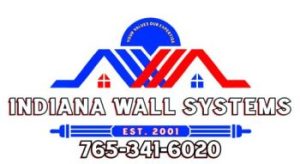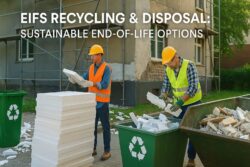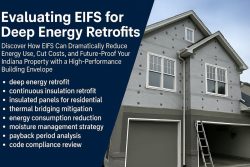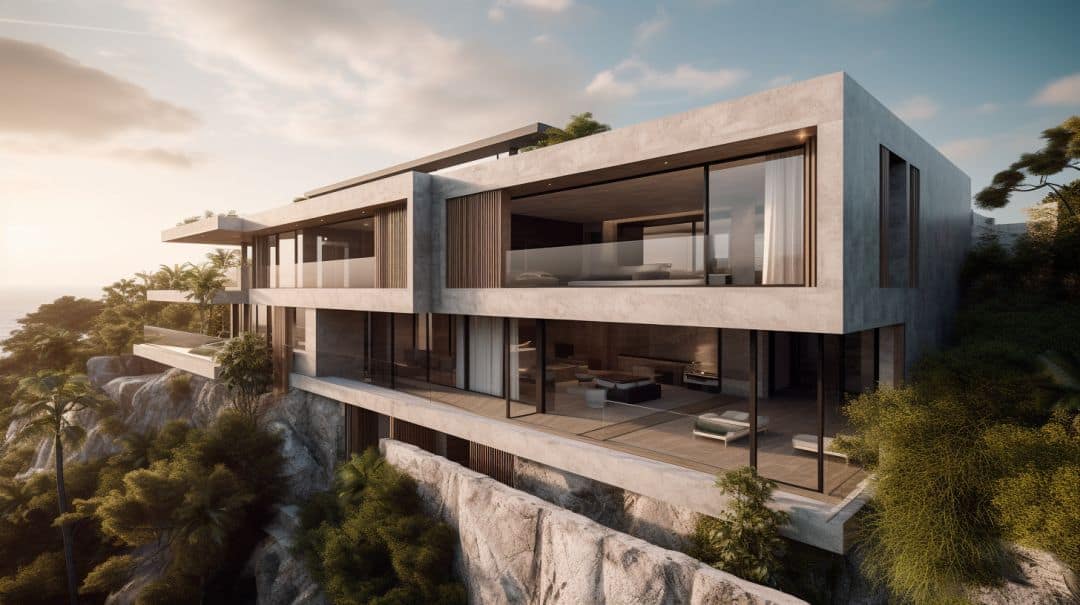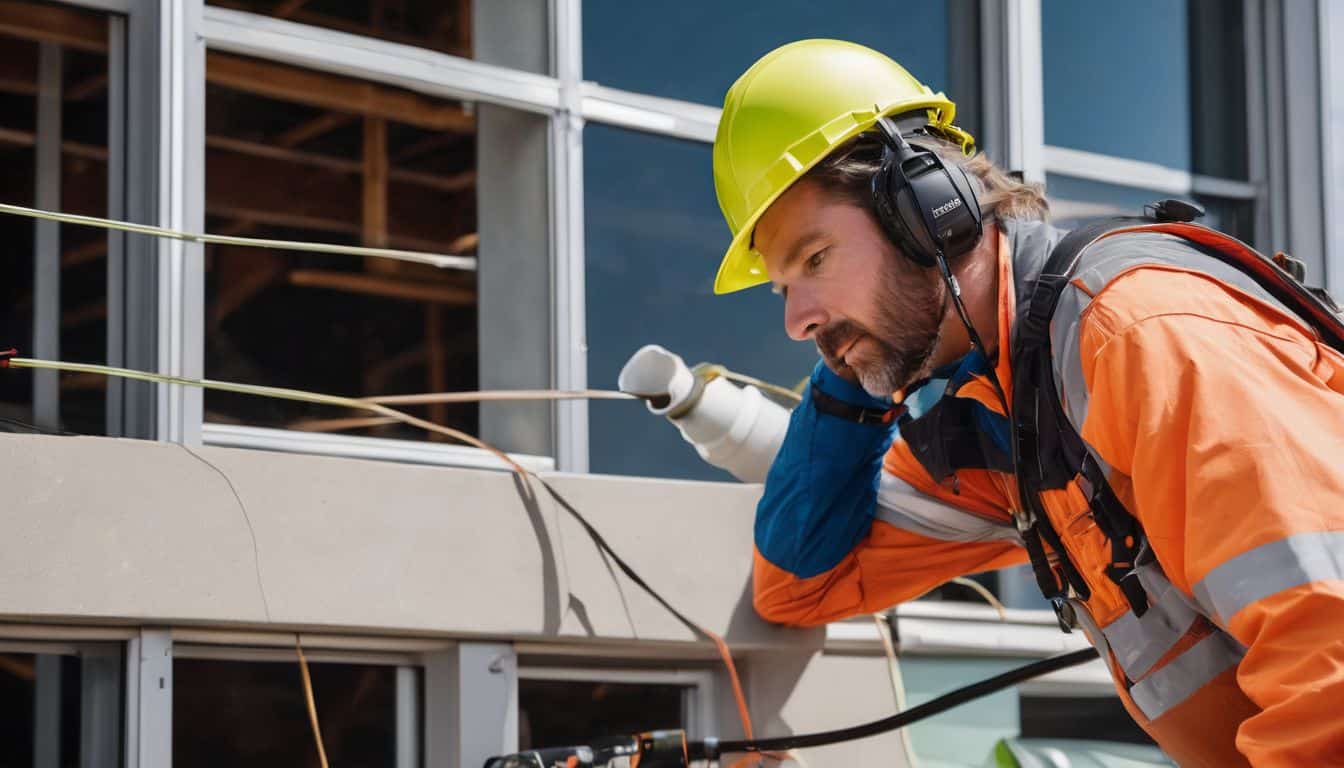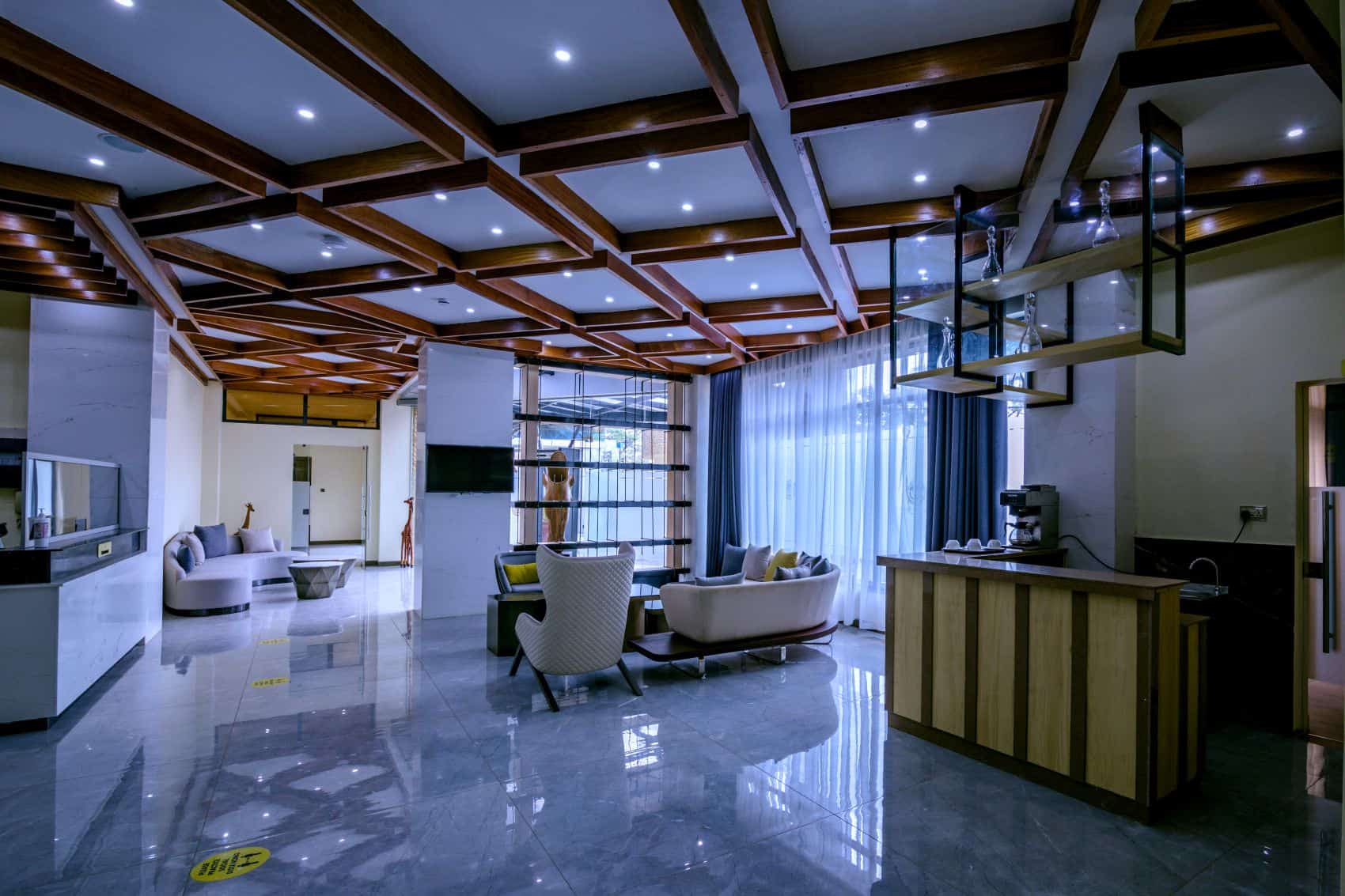Understanding the Energy Efficiency Challenge in Older Homes
Do you own an older home that leaks air like a sieve? Are your energy bills skyrocketing every winter? You’re not alone. Many Indiana homeowners struggle with drafty, poorly insulated houses that waste energy and make comfort a constant battle.
After 22 years in the EIFS business and working with hundreds of older homes, I’ve seen firsthand how the right exterior upgrade can transform an energy hog into an efficient, comfortable living space.
Deep energy retrofits using EIFS (Exterior Insulation and Finish System) can cut heating and cooling costs by 30-50% while giving your home a complete exterior makeover. It’s like wrapping your house in a cozy, stylish blanket that pays you back every month.
Key Takeaways
- EIFS retrofits provide continuous insulation that eliminates thermal bridging and dramatically improves energy efficiency
- Adding EIFS to existing homes can reduce energy bills by 30-50% depending on your current insulation levels
- EIFS retrofits allow you to update your home’s appearance while improving its performance
- Unlike many energy upgrades, EIFS is visible and adds curb appeal while working to save energy
- Professional installation ensures long-term durability and performance of your energy retrofit
Understanding the Energy Efficiency Challenge in Older Homes
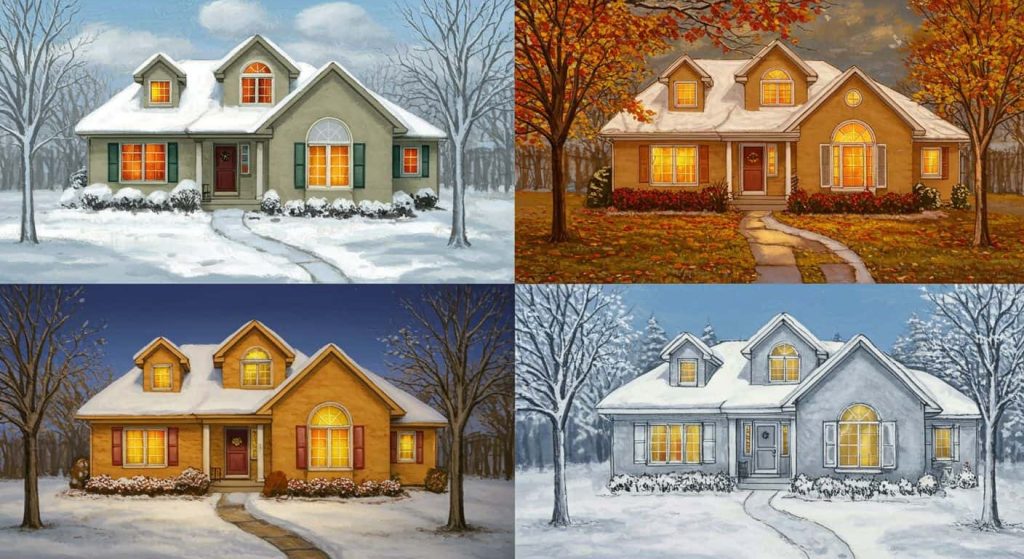
If you live in an older home in Indiana or the Midwest, you know the struggle. Hot, humid summers and frigid winters put massive demands on heating and cooling systems. Homes built before modern energy codes often have:
- Minimal wall insulation (R-5 to R-11 at best)
- Significant thermal bridging through wall studs
- Air leakage at joints, transitions, and penetrations
- Outdated, inefficient cladding systems
These issues aren’t just about comfort—they hit your wallet hard. In my years helping homeowners throughout Indiana, Kentucky, Ohio, Tennessee, Michigan, and Illinois, I’ve seen monthly energy bills drop by hundreds of dollars after a proper energy retrofit.
The building envelope (walls, roof, and foundation) accounts for up to 40% of a home’s energy loss. Addressing this with a comprehensive solution like EIFS can transform your home’s performance.
What Makes EIFS Ideal for Energy-Efficient Retrofits
EIFS isn’t just another siding option—it’s a complete exterior insulation and finish system specifically designed to wrap buildings in continuous insulation while providing weather protection and aesthetic appeal.
The EIFS Energy Advantage
Why does EIFS outperform other retrofit options for energy efficiency? The system includes:
- Continuous insulation that eliminates thermal bridges
- An airtight building envelope that reduces infiltration
- Design flexibility that works with existing structures
- Moisture management systems that protect your investment
At Indiana Wall Systems, we’ve installed EIFS on thousands of buildings over our 22 years in business, and the energy improvements are consistent and significant. When properly installed, EIFS provides insulation values of R-4 to R-6 per inch, allowing us to design systems with overall R-values of R-16 or higher.
Compare this to typical wall assemblies:
| Wall Type | Typical R-Value | Comments |
|---|---|---|
| Pre-1980s Wood Frame | R-5 to R-11 | Significant thermal bridging through studs |
| Brick Veneer with Fiberglass | R-7 to R-13 | Cold spots at mortar joints and framing |
| EIFS Retrofit | R-16 to R-28+ | Continuous insulation eliminates thermal bridges |
The difference is dramatic, and it’s why so many homeowners across Indiana are choosing EIFS for their deep energy retrofits.
How EIFS Transforms an Older Home’s Energy Profile
When we install an EIFS retrofit system on your home, we’re essentially creating a complete thermal shell around the existing structure. This comprehensive approach addresses multiple energy issues simultaneously.
Eliminating Thermal Bridges
In traditional construction, wall studs create a direct pathway for heat transfer—called thermal bridging. These bridges can reduce wall insulation effectiveness by up to 40%.
EIFS eliminates these thermal bridges by providing continuous insulation outside the structural elements. This alone can dramatically improve your home’s overall thermal performance.
As Jeff Johnson, I’ve seen homes where simply eliminating thermal bridging reduced energy consumption by 15-20%, even before accounting for the additional insulation value.
Reducing Air Infiltration
Older homes are notoriously leaky. Air leakage accounts for up to 30% of heating and cooling energy loss in many homes.
The EIFS process allows us to seal joints, transitions, and penetrations methodically as we install the system. The result is a dramatically tighter building envelope that prevents expensive conditioned air from escaping.
Improving Comfort and Reducing HVAC Load
After an EIFS retrofit, homeowners immediately notice improved comfort:
- Even temperatures throughout the home
- Elimination of drafts and cold spots
- Reduced noise from outside
- Lower humidity in summer
These comfort improvements come with significant energy savings as your HVAC system doesn’t have to work as hard to maintain desired temperatures.
The EIFS Retrofit Process: What to Expect
A proper EIFS retrofit isn’t just slapping foam board on your walls. It’s a systematic approach to transforming your home’s energy performance while enhancing its appearance.
Step 1: Comprehensive Building Assessment
Before we touch your house, we conduct a thorough examination:
- Current wall assembly evaluation
- Moisture testing to identify any existing issues
- Structural assessment to ensure the walls can support the system
- Window and door evaluation to plan for proper integration
- HVAC system review to determine if downsizing is possible after retrofit
This assessment allows us to design a system specifically for your home’s needs and identify any underlying issues that need addressing before the retrofit.
Step 2: System Design and Planning
Based on our assessment, we develop a customized plan:
- Insulation thickness based on energy goals and code requirements
- Transition details around windows, doors, and other penetrations
- Water management strategies for your specific home
- Aesthetic options including colors, textures, and architectural details
Every home is different, and our 160+ years of combined experience allows us to design solutions that address your specific challenges.
Step 3: Preparation and Installation
The installation process follows a methodical sequence:
- Wall preparation addressing any existing damage
- Attachment of drainage plane if using a water-managed system
- Installation of insulation boards cut and fitted precisely
- Application of base coat and reinforcing mesh for durability
- Installation of trim accessories around openings and transitions
- Application of finish coat in your chosen color and texture
Throughout this process, our experienced installers pay meticulous attention to detail. The quality of installation directly impacts both energy performance and long-term durability.
Real Results: Energy Savings from EIFS Retrofits
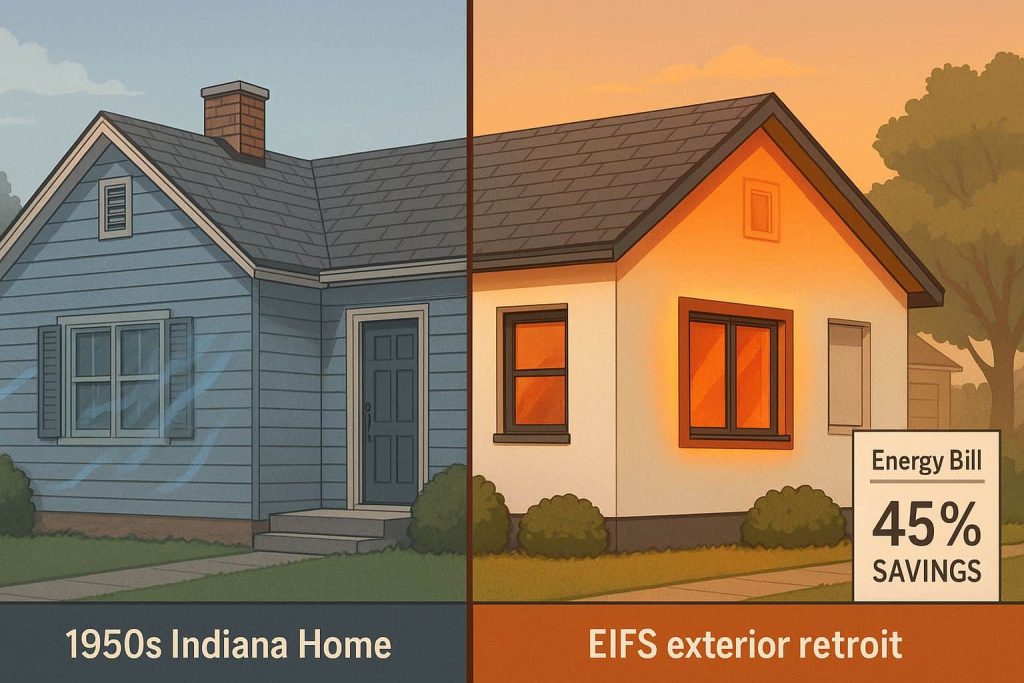
The proof is in the performance. Let’s look at some actual results from homes we’ve retrofitted in Central Indiana.
Case Study 1: 1960s Ranch Home in Indianapolis
This 1,800 square foot home had minimal insulation and high energy bills before retrofit:
- Before EIFS: $320 average monthly heating/cooling costs
- After EIFS: $175 average monthly heating/cooling costs
- Annual Savings: $1,740 (45% reduction)
- Payback Period: 8.5 years based on energy savings alone
Case Study 2: 1940s Two-Story in Carmel
This larger 2,600 square foot historic home faced strict exterior appearance requirements:
- Before EIFS: $425 average monthly heating/cooling costs
- After EIFS: $215 average monthly heating/cooling costs
- Annual Savings: $2,520 (49% reduction)
- Payback Period: 9.2 years
- Additional Benefit: Preserved historic appearance while improving performance
Case Study 3: 1980s Contemporary in Fishers
Even this “newer” home saw significant improvements:
- Before EIFS: $280 average monthly heating/cooling costs
- After EIFS: $195 average monthly heating/cooling costs
- Annual Savings: $1,020 (30% reduction)
- Payback Period: 11.8 years
- Additional Benefit: Complete style update to contemporary design
These are real homes with real savings. The numbers speak for themselves.
Beyond Energy: Additional Benefits of EIFS Retrofits
While energy savings are impressive, they’re not the only reason homeowners choose EIFS for retrofits.
Retrofit
Benefits
Dramatic Aesthetic Transformation
EIFS offers unmatched design flexibility:
- Wide range of colors with excellent fade resistance
- Multiple texture options from smooth modern to textured traditional
- Architectural details like cornices, quoins, and bands easily added
- Complete style transformation without structural changes
Whether you want to modernize your home or enhance its traditional character, EIFS gives us the design tools to achieve your vision.
Improved Weather Resistance
Indiana’s climate can be brutal on exteriors. EIFS provides superior protection:
- Enhanced wind resistance
- Impact resistance with reinforced mesh options
- Freeze-thaw durability for harsh midwest winters
- UV resistance for long-term color stability
Many homeowners find that their homes require less maintenance after an EIFS retrofit.
Increased Property Value
Energy-efficient homes command higher resale values:
- Documented energy savings attract energy-conscious buyers
- Updated appearance improves curb appeal
- Reduced maintenance appeals to new homeowners
- EIFS warranty transfers to new owners
Studies show that energy-efficient features can return 120-300% of their cost in home value increases, making EIFS retrofits a smart financial decision.
Addressing Common Questions About EIFS Retrofits
As an experienced EIFS contractor, I hear many questions from homeowners considering energy retrofits. Here are the most common:
“Can EIFS be installed over my existing siding?”
In many cases, yes. We can install EIFS over:
- Wood siding
- Fiber cement
- Stucco
- Masonry
However, the condition of the existing siding matters. We’ll assess it during our initial evaluation and recommend removal if it’s damaged or deteriorated.
“How long will an EIFS retrofit last?”
When properly installed and maintained, EIFS systems routinely last 30+ years. We use only premium materials and back our work with robust warranties.
The key to longevity is proper installation and maintenance. At Indiana Wall Systems, our 22 years of experience and certified installers ensure your system is built to last.
“Is EIFS environmentally friendly?”
EIFS is one of the most environmentally beneficial cladding systems available:
- Reduces energy consumption and associated carbon emissions
- Low embodied energy compared to many cladding materials
- Long lifespan reduces replacement waste
- Recyclable components in many newer systems
For environmentally conscious homeowners, EIFS aligns with goals to reduce your carbon footprint.
“What about moisture issues? I’ve heard EIFS can trap water.”
This is perhaps the most common concern, based on decades-old issues with early EIFS systems. Today’s systems include:
- Effective drainage planes for moisture management
- Flashing details that direct water away from the building
- Proper sealant joints around penetrations
- Advanced water-resistive barriers beneath the insulation
When installed by experienced professionals like our team at Indiana Wall Systems, modern EIFS is extremely reliable and moisture-resistant.
Choosing the Right Contractor for Your EIFS Retrofit
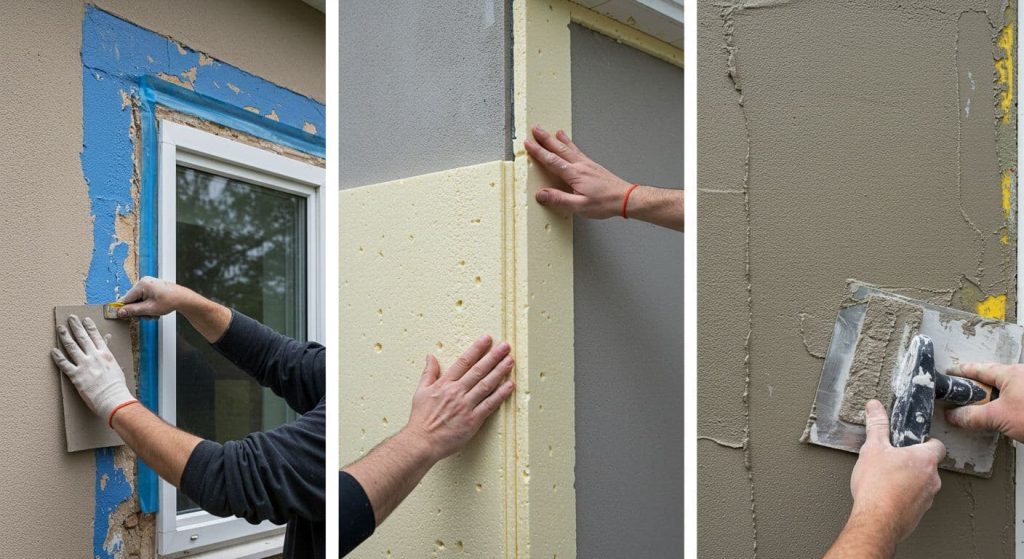
Not all contractors are qualified to install EIFS for energy retrofits. This specialized application requires specific skills and experience.
What to Look For in an EIFS Retrofit Contractor
When evaluating contractors, consider these factors:
- Years of experience specifically with EIFS (we have 22)
- Manufacturer certifications proving proper training
- References from similar retrofit projects
- Understanding of building science and energy efficiency
- Detailed assessment process before providing estimates
- Comprehensive warranty coverage
At Indiana Wall Systems, we check all these boxes and bring our 160+ years of combined experience to every project.
Red Flags to Watch For
Be cautious of contractors who:
- Provide estimates without thorough inspection
- Have limited experience with energy retrofits
- Cannot provide references for similar projects
- Don’t discuss moisture management strategies
- Offer unusually low prices (quality installation isn’t cheap)
Remember, the long-term performance of your EIFS retrofit depends largely on the quality of installation.
Cost Considerations for EIFS Energy Retrofits
Let’s talk about the investment required for an EIFS retrofit and how to evaluate its value.
Typical Cost Ranges
EIFS retrofit costs vary based on:
- Home size and configuration
- Condition of existing walls
- Insulation thickness required
- Complexity of architectural details
- Window and door details
For a typical Central Indiana home, expect to invest between $20-30 per square foot for a complete EIFS retrofit. This includes all components, labor, and finishing.
Understanding Return on Investment
While the upfront cost may seem significant, consider the returns:
- Energy savings of 30-50% annually
- Increased property value (typically 70-80% of project cost)
- Reduced maintenance costs compared to many siding options
- Extended HVAC equipment life due to reduced load
- Improved comfort that’s hard to put a price on
When considering these factors together, many homeowners find that EIFS retrofits offer compelling long-term value.
Available Incentives and Financing
Several options can help offset initial costs:
- Federal tax credits for energy-efficient building envelope improvements
- Utility company rebates (varies by provider)
- Energy-efficient mortgages that roll improvement costs into financing
- Home equity loans with tax-deductible interest
- Manufacturer financing through certain EIFS providers
Our team can help you identify available incentives during your consultation.
Planning Your EIFS Energy Retrofit: Next Steps
Ready to explore how an EIFS retrofit could transform your home’s energy performance? Here’s how to get started:
Step 1: Initial Consultation
Contact us for a free consultation to discuss:
- Your energy efficiency goals
- Your home’s current condition
- Design preferences and aesthetic goals
- Budget considerations
- Timeline and process
This no-obligation conversation helps us understand your needs and gives you a clear picture of what’s possible.
Step 2: Detailed Assessment
If you decide to move forward, we’ll conduct a comprehensive assessment of your home, including:
- Wall construction analysis
- Energy performance testing
- Moisture evaluation
- Structural review
- Design options presentation
This thorough approach ensures we design the optimal system for your specific home.
Step 3: Proposal and Planning
Based on our assessment, we’ll provide:
- Detailed cost estimate
- Project timeline
- System specifications
- Color and texture samples
- Financing options if desired
We take the time to answer all your questions, ensuring you’re completely comfortable before proceeding.
Why Choose Indiana Wall Systems for Your Energy Retrofit
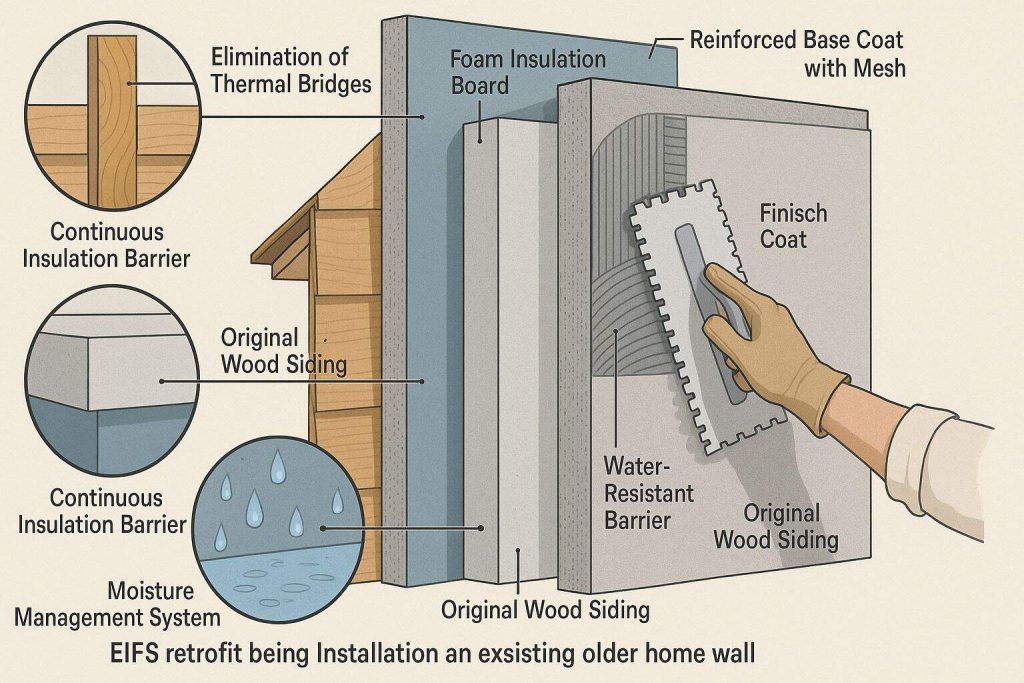
For over 22 years, we’ve been Central Indiana’s trusted EIFS experts. Our approach sets us apart:
- Certified installers with specialized training
- Proven track record with hundreds of successful retrofit projects
- Comprehensive warranties for peace of mind
- Attention to detail that ensures performance and durability
- Custom solutions tailored to your specific home and needs
We’re not just contractors—we’re building performance specialists committed to improving your home’s energy efficiency, comfort, and value.
Conclusion: Transform Your Home’s Performance with EIFS
An EIFS energy retrofit represents one of the most comprehensive solutions available for improving older homes. By addressing insulation, air leakage, moisture management, and aesthetics in one integrated system, EIFS delivers results that few alternatives can match.
If you’re tired of high energy bills, uncomfortable rooms, and outdated exteriors, it’s time to consider how EIFS can transform your home.
Ready to learn more? Contact us today to schedule your free consultation and take the first step toward a more efficient, comfortable, and beautiful home.
Frequently Asked Questions About EIFS Energy Retrofits
How much energy can I expect to save with an EIFS retrofit?
Most homeowners see energy savings between 30-50% on heating and cooling costs, depending on the current condition of their home and the system designed. Homes with very poor existing insulation often see the highest percentage improvements.
Can EIFS be installed year-round in Indiana?
Yes, though there are temperature considerations for certain components. We typically recommend installation when temperatures are above 40°F for optimal curing of adhesives and finishes. However, we can work throughout much of the year with proper planning.
Will my home look like commercial building with EIFS?
Absolutely not! Today’s EIFS offers incredible design flexibility. We can create virtually any look, from traditional to ultra-modern, with a wide range of textures and colors. Many of our residential retrofits enhance the home’s original character while improving performance.
How does EIFS compare to adding insulation inside my walls?
Interior insulation retrofits are disruptive, require removing drywall, and still leave thermal bridges through studs. EIFS provides continuous exterior insulation that’s more effective, doesn’t disrupt your living space, and improves your home’s appearance simultaneously.
Are there any maintenance requirements for EIFS?
Yes, but they’re minimal. We recommend:
- Annual visual inspection
- Cleaning as needed (typically every 3-5 years)
- Sealant joint inspection every 7-10 years
- Prompt repair of any damage
With this simple maintenance, your EIFS system will perform beautifully for decades.
Can I install EIFS myself to save money?
EIFS is not a DIY-friendly system. Proper installation requires specialized knowledge, tools, and techniques. Improper installation can lead to moisture problems, reduced energy performance, and premature failure. Professional installation is essential for a successful retrofit.
